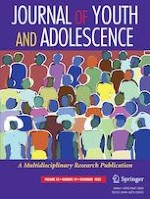04-09-2023 | Empirical Research
When is Solitude Maladaptive for Adolescents? A Comprehensive Study of Sociability and Characteristics of Solitude
Gepubliceerd in: Journal of Youth and Adolescence | Uitgave 12/2023
Log in om toegang te krijgenAbstract
Research examining the link between solitude and psychosocial adjustment among adolescents has lacked a comprehensive, person-centered examination of differential patterns of both solitude and sociability. The current study surveyed 1071 adolescents (Mage = 12.48, SD = 1.71, 49.86% female, age range = 10–16 years). Using latent-profile analysis, four groups were identified with differential patterns of characteristics of solitude (i.e., enjoyment, motivations, preference, frequency) and sociability. Results indicated that worse psychosocial adjustment across time points was associated with membership in the PFS-NonSociable group (characterized by high enjoyment, preference, and frequency of solitude; low sociability) compared to all other groups. Findings suggest that solitude for adolescents appears to be linked to worse psychosocial adjustment only if accompanied by a lack of sociability.
